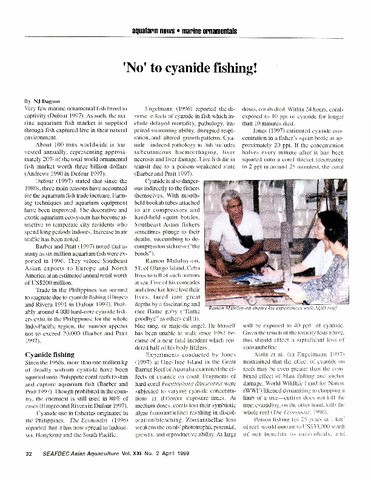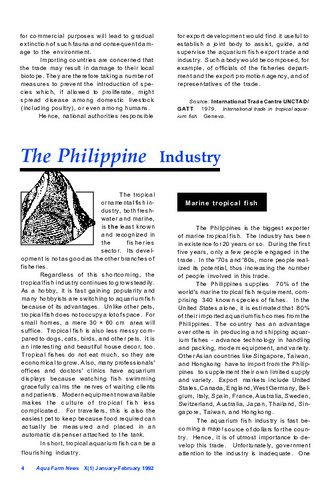The plight of older women in a fishing village: The women fish traders of Bugtong Bato, Aklan, central Philippines
| dc.contributor.author | dela Pena, L. | |
| dc.contributor.author | Marte, Clarissa L. | |
| dc.contributor.editor | Williams, M. J | |
| dc.contributor.editor | Nandeesha, M. C. | |
| dc.contributor.editor | Corral, V. P. | |
| dc.contributor.editor | Tech, E. | |
| dc.contributor.editor | Choo, P. S | |
| dc.date.accessioned | 2011-06-22T09:35:50Z | |
| dc.date.available | 2011-06-22T09:35:50Z | |
| dc.date.issued | 2001 | |
| dc.identifier.citation | dela Pena, L., & Marte, C. L. (2001). The plight of older women in a fishing village: The women fish traders of Bugtong Bato, Aklan, central Philippines. In M. J. Williams, M. C. Nandeesha, V. P. Corral, E. Tech, & P. S. Choo (Eds.), International Symposium on Women in Asian Fisheries: Fifth Asian Fisheries Forum, 13 November 1998, Chiang Mai, Thailand (pp. 165-172). Penang, Malaysia: ICLARM. | en |
| dc.identifier.uri | http://hdl.handle.net/10862/444 | |
| dc.description.abstract | The changing nature of the fisheries in Bugtong Bato, a small fishing community in Central Philippines has also changed the role of women, particularly of older women, in the community. Until the 1980s, fishing used mainly traditional gears and methods and was highly seasonal. The livelihood activities of men were highly diversified, and fishermen undertook seasonal outmigration to the sugarcane plantations in Negros. Younger women and women of child-bearing age attended to domestic chores, helped their husbands prepare for the day's fishing activities, sought employment as domestic helpers in the capital town or Manila, or engaged in seasonal jobs such as rice harvesting or sinamay fiber knotting. Older women mainly attended to domestic chores. With the introduction of new fishing gears and methods, seasonal outmigration has virtually stopped. The men who participated in group fishing financed by local financiers earn better incomes from these new fishing techniques. However, as fishing now requires longer periods at sea, older fishermen are unable to join their younger counterparts, and rely only on traditional fishing methods for their livelihood. Due to physical limitations and poor health, older fishermen are unable to earn enough to support their families, and their wives seek supplementary means of livelihood. The introduction of new fishing gears and methods has increased considerably the volume of fish landed and spurred the development of a new economic activity in this community - that of fish trading. Most fish traders are older women whose husbands are unable to fish or whose income from fishing cannot meet their daily needs. As such, older women in this community have assumed the role of primary providers for their families. | en |
| dc.language.iso | en | en |
| dc.publisher | ICLARM | en |
| dc.subject | Philippines | en |
| dc.subject.lcc | VF SP 0248 | |
| dc.title | The plight of older women in a fishing village: The women fish traders of Bugtong Bato, Aklan, central Philippines | en |
| dc.type | Conference paper | en |
| dc.citation.spage | 165 | |
| dc.citation.epage | 172 | |
| dc.citation.conferenceTitle | International Symposium on Women in Asian Fisheries: Fifth Asian Fisheries Forum, 13 November 1998, Chiang Mai, Thailand | en |
| dc.subject.asfa | fishery technology | en |
| dc.subject.asfa | sociology | en |
| dc.subject.asfa | fishing gear | en |
| dc.subject.asfa | fisheries development | en |
| dc.subject.asfa | fish industry | en |
Files in this item
| Files | ขนาด | รูป | View |
|---|---|---|---|
|
There are no files associated with this item. |
|||
รายการนี้ปรากฏใน (s)
-
Conference Proceedings [299]




